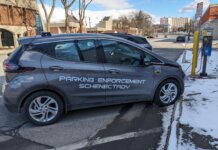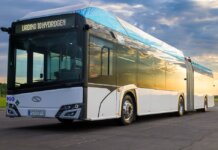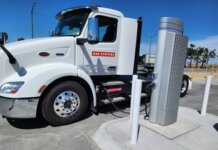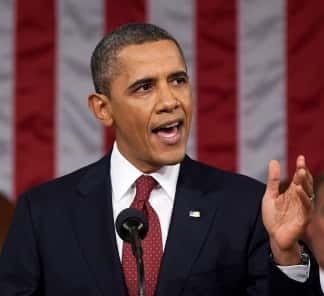Just days before Donald Trump was elected the next president of the United States, the Obama administration announced new actions to accelerate the deployment of electric vehicles (EVs) and charging infrastructure across the nation, including designating 48 national EV charging corridors on U.S. highways.
This move furthers the actions the administration has steadily taken to combat climate change, increase access to clean energy technologies and reduce the nation’s dependence on oil.
Already, in the past eight years, the number of plug-in EV models has increased from one to more than 20, battery costs have decreased 70%, and we have increased the number of EV charging stations from less than 500 in 2008 to more than 16,000 today – a 40-fold increase. With this announcement, the administration is taking the initiative a step further.
According to a White House release, this announcement demonstrates the continued partnership among the administration, states, localities and the private sector to achieve the following goals:
- The U.S. Department of Transportation (DOT) is establishing 48 national EV charging corridors on U.S. highways, covering nearly 25,000 miles in 35 states;
- 28 states, utilities, vehicle manufacturers and change organizations are committing to accelerate the deployment of EV charging infrastructure on the DOT’s corridors;
- 24 state and local governments are committing to partner with the administration and increase the procurement of EVs in their fleets;
- The U.S. Department of Energy (DOE) is conducting two studies to evaluate the optimal national EV charging deployment scenarios, including along the DOT’s designated fueling corridors; and
- 38 new businesses, nonprofits, universities and utilities are signing on to the DOE’s Workplace Charging Challenge and committing to provide EV charging access for their workforce.
According to the White House, this announcement builds on progress from multiple programs across the administration working to scale up EVs and fueling infrastructure, including at the departments of energy, transportation and defense; with the U.S. Environmental Protection Agency; and with the private sector.
This summer, the administration opened up to $4.5 billion in loan guarantees to support the commercial-scale deployment of EV charging facilities, and in collaboration with the administration, nearly 50 industry members signed on to the Guiding Principles to Promote Electric Vehicles and Charging Infrastructure effort.
As previously reported, the DOT’s Federal Highway Administration (FHWA) recently announced 55 Interstates that will serve as the basis for a national network of alternative fuel corridors spanning 35 states, plus the District of Columbia. Building off of that, this announcement includes designating 48 out of the 55 routes EV charging corridors.
To make it easier for drivers to identify and locate charging stations, states designated as “sign-ready” are authorized to use signs developed by the FHWA that identify EV charging stations and other alternative fuels along the highways – similar to existing signage alerting drivers to gas stations, food and lodging. The DOT says drivers can expect either existing or planned charging stations within every 50 miles.
These initial and future corridors are intended to effectively enable coast-to-coast, zero-emission mobility on the nation’s major highways.
As for the DOE studies, the agency plans to publish two studies early next year developed with national laboratories and with input from stakeholders to support broad EV charging infrastructure deployment, including along the DOT’s alternative fuel corridors. The first will be a national EV infrastructure analysis that identifies the optimal number of charging stations for different EV market penetration scenarios. The second will provide best practices for EV fast-charging installation, including system specifications, as well as siting, power availability, and capital and maintenance cost considerations.
The White House says it will be convening with key stakeholders this month to continue encouraging state and local governments and businesses to build public EV charging infrastructure along national highways.
Building on the administration’s policy to reduce greenhouse-gas emissions from federal fleets by 30% by 2025, the 24 states and local governments pledging to electrify their fleets will account for over 2,500 new EVs in 2017 alone and help pave a path for a sustained level of purchases into the future. Together, federal, state and local leadership can aggregate demand to lower purchase costs through increasing automotive manufacturers’ demand certainty; promote EV innovation and adoption; and expand the national EV infrastructure.
The cumulative benefit of the commitments announced include more than $1 million and 1,211,650 gallons in potential annual fuel savings.
One of those 24 states and local governments, for example, is the City of Los Angeles, which intends to procure 50% of all new light-duty vehicles as battery-electric vehicles (BEVs) by 2017 and 80% of municipal fleet procurements as BEVs by 2025. The city has announced its commitment to the following:
- Nearly triple the city’s current plug-in electric fleet from 165 BEVs and 38 plug-in hybrid electric vehicles (PHEVs) to over 400 BEVs and 155 PHEVs by the end of 2017 – and of those, 352,200 will be for the Los Angeles Police Department;
- Spend $22.5 million on EV charging stations by June 2018, which includes making 500 additional public EV charging stations available throughout the city by the end of 2017, for a total of 1,500;
- Launch an EV car share for disadvantaged communities by 2017;
- Electrify 10% of the Los Angeles DOT bus fleet by 2017; and
- Test 20 near-zero-emission natural gas tractors at the L.A. Port and plan for five zero-emission, plug-in battery yard tractors at the L.A. Port container terminal.
Another is the City of Seattle, which now operates one of the largest municipal fleets of EVs in the nation. The city has committed to the following:
- Achieve a 50% reduction in greenhouse-gas pollution from the municipal fleet by 2025;
- Purchase 100 EVs through 2017 to achieve 40% electrification of its current light-duty fleet;
- Purchase 250 EVs by 2020, with a target of 400 EVs by 2023, to achieve 100% of light-duty fleet;
- Install 200 EV charging stations for fleet vehicles in 2017/2018, 300 EV charging stations by 2020 and 400 EV charging stations by 2023;
- Work with original equipment manufacturers to participate in fleet demonstrations of EV technology in medium- and heavy-duty vehicles over the next five years; and
- Sign on to the U.S. DOE Workplace Charging Challenge and write a new workplace charging policy in 2017.
For the full list of states, cities and organizations that have committed to help accelerate the deployment of EVs and associated charging infrastructure, click here.







